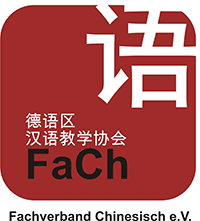再谈用影视录像进行口语学的几个环节
Autor/innen
This paper is a supplement to the one I wrote last year *), concerning about how to teach colloquial Chinese by video.
The most important advantage of using video in teaching is that the communication between students and teachers is based on reality, the contents are clear and identical. Therefore, we may enhance the student´s academic interest.
On specification, we have to pay attention to the following points:
- Watching: Pay attention to the paragraphs of the whole story and the analysis of each period of the story;
- Listening: A) Understand the lines and the plot in order to possess a background knowledge for ‘speaking’; B) Learn the lively colloquial expressions from the lines;
- Thinking: Prepare some comprehension questions for the students to answer so as to let them acquire a better understanding of the plot. It is necessary to give them some ‘hints’ so that they will be able to observe the pictures more carfully;
- Speaking: Pay attention to the whole piece;
- Writing: Can only become a supplement to the classroom teaching but also improves the student´s colloquial Chinese;
- Testing: A) Watch the video; B) Record the student`s voice individually; C) Grade.
It has been proved through practice that it is an admirable way for us to teach colloquial Chinese by video.
*) “Kan, ting, xiang, shuo, xie – tan yong dianshi luxiang jinxing kouyu jiaoxue de ji ge huanjie”, Di yi jie guoji Hanyu jiaoxue taolunhui lunwenxuan (Beijing: Yuyan Xueyuan Chubanshe 1986), pp. 516-521.

Dieses Werk steht unter der Lizenz Creative Commons Namensnennung - Weitergabe unter gleichen Bedingungen 4.0 International.

Dieses Werk steht unter der Lizenz Creative Commons Namensnennung - Weitergabe unter gleichen Bedingungen 4.0 International.







